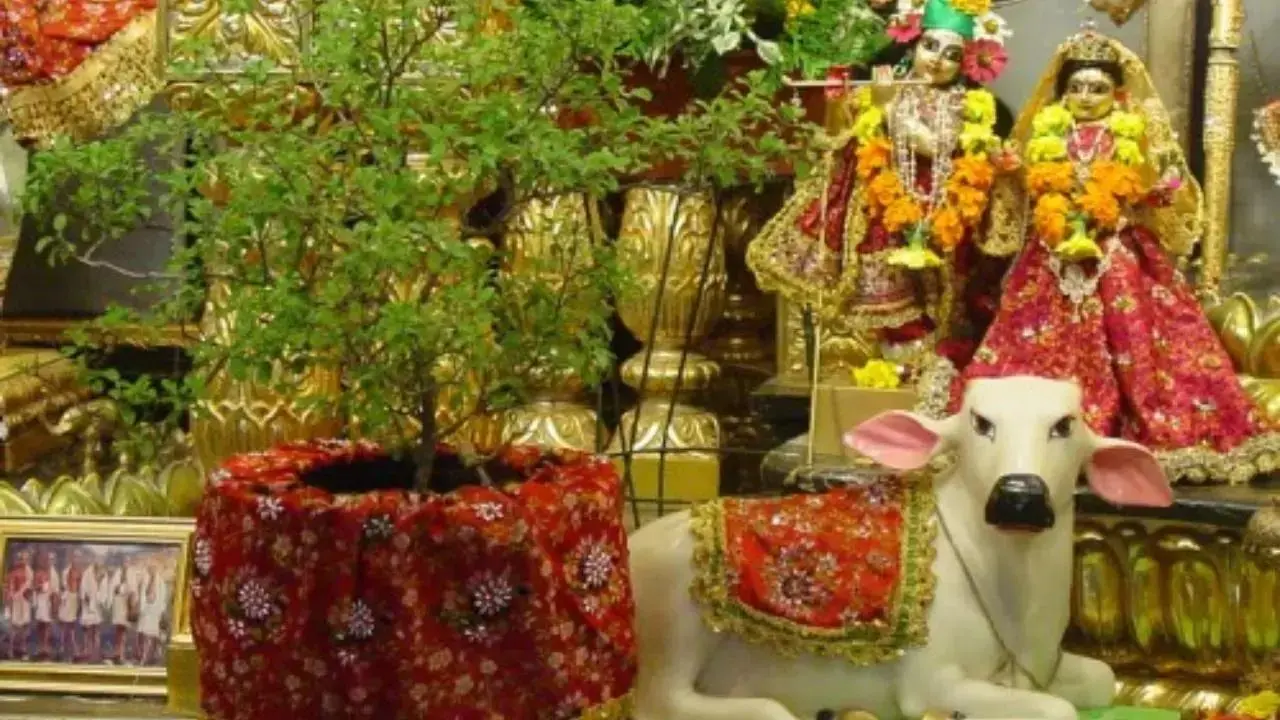Tulsi Vivah 2023: Tulsi Vivah, a revered tradition in Hinduism, holds deep spiritual significance and rituals that usher in happiness and prosperity. This sacred event is rooted in the marriage of Tulsi Mata to the idol form of Lord Vishnu, Lord Shaligram, as depicted in scriptures. Understanding the essence of Tulsi Vivah 2023, including its date, rituals, and spiritual relevance, is paramount for devotees seeking blessings and harmony in their lives.
Tulsi Vivah 2023: A Celebration of Spiritual Union
According to the Hindu calendar, Tulsi Vivah falls on the Dwadashi date of Shukla Paksha in the Kartik month. This year, the festival commences on Thursday, November 23, at 9:01 pm and concludes on Friday, November 24, at 7:06 pm. Devotees honor Tulsi on this day, with some observing fasts to invoke auspicious blessings.
Auspicious Moments and Rituals
The significance of performing Tulsi Vivah rituals during Pradosh Kaal, specifically on November 24 from 5:25 pm to 6:04 pm, is believed to be immensely beneficial. This day marks the convergence of Sarvartha Siddhi Yoga, Siddhi Yoga, and Amrit Siddhi Yoga. Siddhi Yoga prevails from Brahma Muhurta until 9:05 am, while Amrit Siddhi Yoga blesses from 6:51 am to 4:01 pm. Sarvartha Siddhi Yoga permeates throughout the Tithi.
The Sacred Ceremony: Required Items and Rituals
To conduct the Tulsi Vivah puja, gather essential items such as the Tulsi plant, Lord Shaligram idol or photograph, yellow cloth, red Chunri, vermilion, Kumkum, Akshat, earthen lamp, Ghee, flowers, seasonal fruits, Panchamrit, and various fruits like radish, sugarcane, sweet potato, amla, water chestnut, plum, custard apple, and guava. Additionally, having the Tulsi Vivah Katha book and the Vishnu Sahasranama book is advisable.
Performing the Puja with Reverence
On the day of Tulsi Vivah, set up an altar cloth on a clean stool and place the Tulsi plant upon it. Similarly, install the Shaligram on another setting and create a pavilion using sugarcane over both. Position a Kalash filled with water encircled by seven mango leaves in a circular arrangement.
Embracing the Rituals for Blessings
Light a ghee lamp while worshipping Maa Tulsi and the Shaligram. Adorn the Tulsi plant with the red Chunri and offer symbolic items like bangles, bindi, and vermilion. Circumambulate the Tulsi seven times while holding the Shaligram, a pivotal ritual. Offer food as Prasad, sharing it with friends and family.
Significance and Blessings
The tradition of Tulsi Vivah originates from the divine union of Tulsi Mata and Lord Vishnu in the form of Lord Shaligram, fostering the belief that couples worshipping Tulsi and honoring Lord Vishnu on this auspicious day are bestowed with a joyous married life, alleviating the challenges within matrimony.









